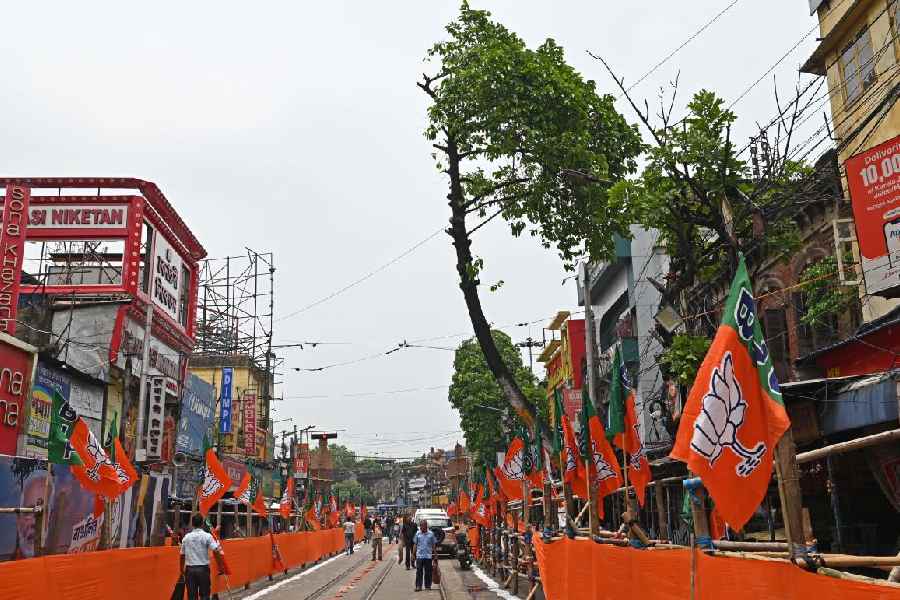The fear of popular discontent ahead of Saturday’s vote in Calcutta and the pressure to clear roads before political rallies by the Prime Minister and the chief minister left their mark on how several agencies worked to combat the impacts of Cyclone Remal.
New equipment were procured before the cyclone, additional men were deployed and frequent review meetings to take stock of the situation were held, said officials of the Kolkata Municipal Corporation (KMC).
An emergency set-up — extra emergency workers and extra drainage pumps — that is usually put in place every year from June 10 to deal with the monsoon was rolled out much in advance this year, on May 25, the officials said.
The result: the water receded from most arterial roads, all roads where trees had fallen were cleared and power was back in most places by Monday evening.
Equipment, workers
The KMC purchased 35 chainsaws last week as it became clear that Cyclone Remal would leave its impact on Calcutta. There were chainsaws earlier, too, but those were often found inadequate and had to be moved long distances to cut trees.
“We decided to keep enough chainsaws so no team had to wait for a chainsaw to arrive,” said a senior KMC official.
Chainsaws can cut the trunk of an uprooted tree into small parts.
The KMC had deployed between 25 and 40 men in each of the 16 boroughs to cut fallen trees or broken branches. Usually, each borough has six to eight men for the job.
“We hired additional hands only for the cyclone so enough human resources were available to clear the roads,” said a KMC engineer.
CESC had posted teams in each of the 144 KMC wards with the idea that decentralised teams across the city would be able to respond faster to complaints of power cuts.
Officials admitted that there was “pressure” to ensure there were no major incidents or long periods of waterlogging days ahead of the Lok Sabha polls in the city.
Monitoring
Frequent review meetings by senior officials at the KMC headquarters, calls to engineers in boroughs and wards to take stock of the ground situation and operating pumps in the drainage pumping stations overnight on Sunday were some of the steps taken to drain out water fast.
“We ran our pumps to the optimum in all drainage pumping stations. Our engineers in some of the more important drainage pumping stations worked overnight to ensure that all pumps functioned. Water was drained out fast because we could run the pumps at the optimum level for a long duration. That needed monitoring,” said a senior engineer.
Chief minister Mamata Banerjee held a rally from Gandhi Bhavan in Beleghata to Maniktala and a meeting in Burrabazar on Monday.
“Her rallies were pushed back to the evening on Monday because of the weather. The roads had
been free of water by then,” said
an engineer.
On Tuesday, Mamata walked from Entally Market to Ballygunge Phari and addressed a public meeting in Behala.
On Tuesday evening, Prime Minister Narendra Modi did a roadshow along Bidhan Sarani, from Shyambazar to Swami Vivekananda’s house.
Many trees on Bidhan Sarani leaned on the road under the
impact of the storm. The KMC
had to send teams to prune
the trees.
A senior KMC official said there was also pressure to create conditions so work to set up infrastructure in the polling stations could begin on Tuesday.
“Kolkata South, Kolkata North and Jadavpur are among the constituencies in Bengal that will go to the polls on Saturday. The infrastructure in the polling stations has to be ready a few days before the poll day. Waterlogged roads or trees lying on roads could be a hindrance to the setting up of the infrastructure,” said a senior KMC official.











